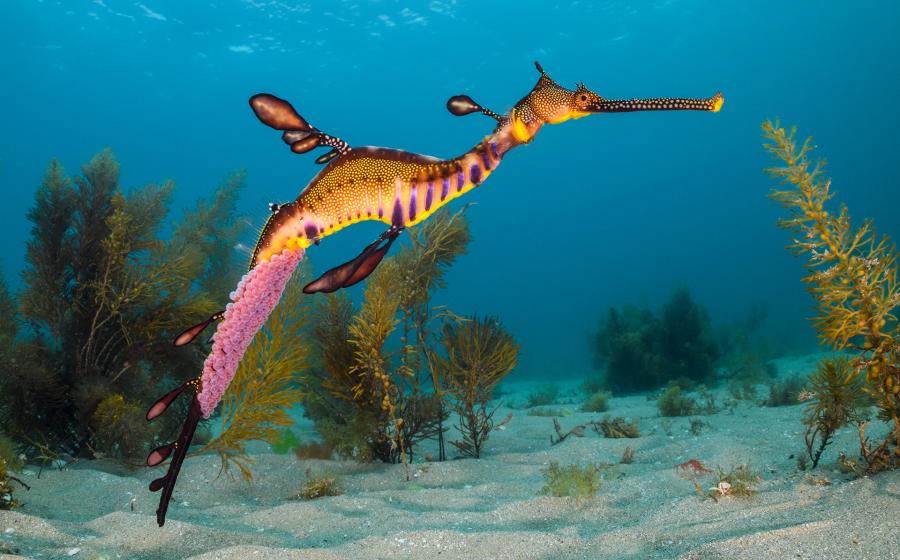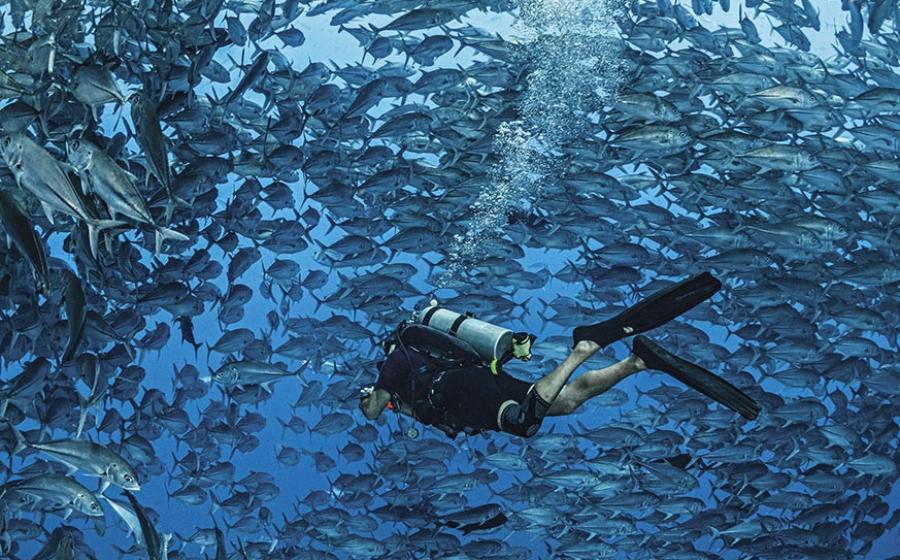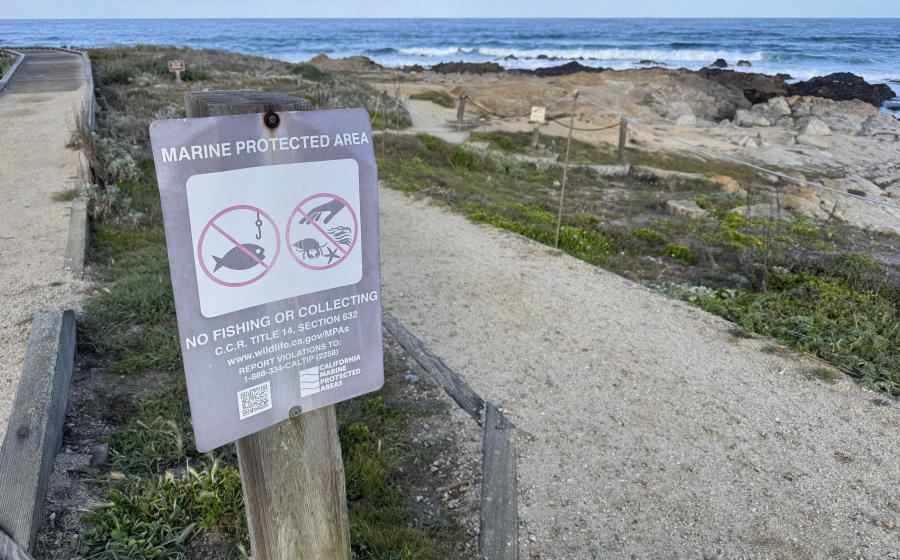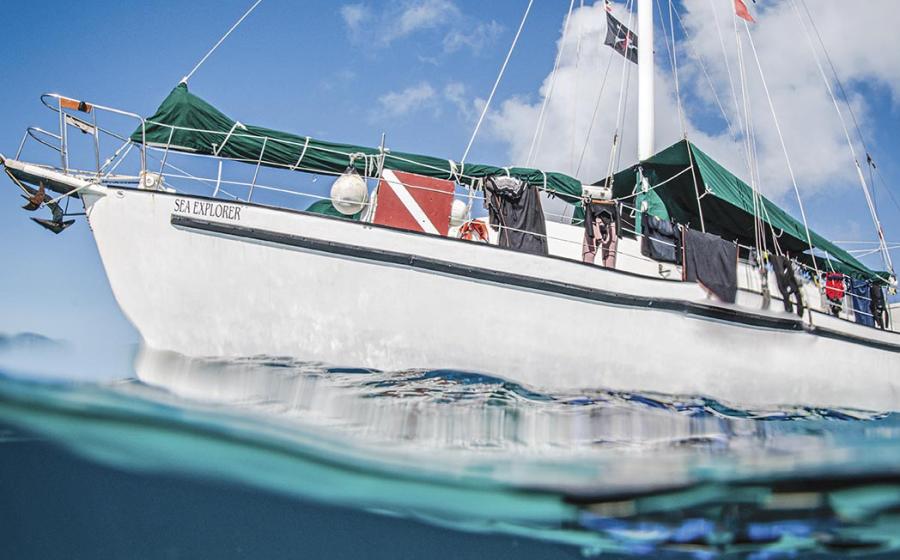Finders Keepers?
Reclaiming Mementos Helps Teach History Lessons
By Sean Fisher Many archeologists today say that we “treasure hunters” are only out for profit and will plunder a wreck site to get it. But before rushing to that judgment, I invite them to investigate our family’s historic shipwreck-salvage and conservation operation, Mel Fisher’s Treasures. Every artifact we find on a shipwreck, from a bronze spike to a gold bar, we handle with the utmost integrity. We developed many of the archaeological guidelines for salvage in the past 50 years, and we continue to follow them, without wavering. We map every wreck we find, whether it’s one that carried gold and silver, or one that transported human captives to be sold into slavery. Every artifact we’ve ever found is in an online database anyone in the world can view, enjoy and learn from. We even have archeologists on staff to ensure the archeological integrity of our operation. Unique artifacts, such as a 78-karat emerald we found in 1985 on the Nuestra Señora de Atocha near Key West, we donate to various museums for the world to enjoy. Granted, we do sell artifacts to make a living, but only after careful study and conservation. If we didn’t sell artifacts, past wonders such as a beautiful gold belt worn by an 18th century Spanish noble — discovered on one of the wrecks of the 1715 Plate Fleet off the coast of Florida — would still be deteriorating on the bottom of the ocean. Today, I proudly wear a Piece of Eight, a silver coin from the wreck of the Atocha, around my neck. I can’t tell you how many conversations about 17th-century colonial life this has sparked. These conversations have educated people about this part of history, who otherwise wouldn’t have known anything about it. If Kip Wagner, a pioneer of treasure hunting, hadn’t found gold coins in the Plate Fleet wreckage in the early 1960s, we wouldn’t have had 50 years of continuous investigation and recovery of the Fleet’s artifacts. And if my beloved grandfather Mel Fisher hadn’t spent 16 years of his life and millions of dollars provided by private investors, the artifacts of Atocha and her sister ship that lies nearby, the Santa Margarita, would still be at the bottom of the sea. If not for the efforts of Tampa, Florida-based treasure salvor Odyssey Marine, the SS Republic off the coast of Savannah, Georgia, and the Black Swan and HMS Victory, in international waters near the English Channel, would still be unknowns. Other historically significant vessels, such as the slave ship Henrietta Marie near Florida’s Dry Tortugas, wouldn’t have been discovered and its artifacts then turned over to state or not-for-profit institutions for educational purposes. Professional groups of historic salvors are specialists in their own right and use both archaeological techniques and state-of-the-art technologies to investigate, document and recover shipwrecks. They use the most current conservation techniques to stabilize and preserve their finds, publish works about them and create museums for the public to view the history they’ve recovered. And historic salvors don’t get any grant money or taxpayer dollars to use for their work. We’ve always had an open invitation to anyone who frowns upon treasure hunting to come out with us and see what we do. You’ll see we’re not plunderers and profiteers, but in reality are passionate preservers of history. Sean Fisher, vice-president of Mel Fisher’s Treasures — a Key West, Florida-based historic shipwreck salvage company — has been diving the Atocha and other wrecks since he was 15, when he first started collecting treasure.
Pillaging treasure hunters should leave wrecks to science
By Charles Beeker When it comes to the correct approach to recovering artifacts from historic shipwrecks, evaluating treasure hunting versus underwater archeology is like comparing a dictatorship to a democracy. In the case of treasure hunting, the shipwreck is controlled by an individual — or select few — who decide what will be recovered, based on monetary reward. Typically, treasure hunters target the ship’s cargo of precious goods, such as gold or silver, with little or no regard to the wreck’s more complex historical significance as a living time capsule, or porthole to the past. The driving force behind treasure hunting is profit, through the commercial salvaging of selected artifacts for private ownership. Show me a treasure hunt and I’ll show you lots of media attention, but little substance. Still, underwater archaeologists should learn from the treasure hunters to better promote their efforts to the public. Underwater archaeologists are often perceived as being aloof and having little knowledge of free enterprise as exemplified by treasure hunters. Irrespective of this perception, underwater archaeologists are public servants and work in a democratic system of peer review with ethical practices. Most importantly, underwater archaeologists readily acknowledge they live in a world of public stewardship that advocates the idea that historic shipwrecks are public domain and should not be selectively pillaged, with artifacts sold to the highest bidder. Having learned to scuba dive in the 1960s, I can appreciate both the treasure hunters’ and the archaeologists’ points of view. Watching Art McKee, the father of modern treasure hunting, salvage the 1733 shipwreck of the Florida Keys on the 1960s TV show Danger Is My Business, was an awe-inspiring experience. Likewise, reading National Geographic issues featuring George Bass, the father of underwater archaeology (along with Peter Throckmoton), led me to dream of directing my own scientific recovery of historic shipwrecks. However, from the beginning it was quite evident there was a serious dichotomous approach to recovery. Now that I have completed nearly 40 years as a professional in the field specializing in the establishment of underwater shipwreck parks and preserves, I’m concerned about the destruction of historic shipwrecks, both in the name of science and treasure hunting. I’m tired of hearing about all the gold and silver recovered, and I can’t count the number of sites I’ve seen where all the cannons, anchors or other major recognizable artifacts are gone, leaving only a debris field. Regardless of public- versus private-ownership debate, the end product is the same — the removal of our world’s maritime heritage at an alarming rate. Shipwrecks are finite resources. I often ask myself: What makes us feel so compelled to recover all the world’s shipwrecks in our generation? What will we leave for future generations? Shipwrecks should be treated as living museums in the sea, and whenever possible, should be left where they came to rest. With the advent of 21st-century deep-water exploration equipment, I pray the first 50 years of shipwreck recovery won’t be the model for the next 50. If so, we’ll soon have to ask ourselves: Where have all the shipwrecks gone? Charles D. Beeker, an avid scuba diver since 1963, directs Indiana University’s academic diving and underwater science programs. He has helped establish underwater parks and preserves throughout the United States and Caribbean.
Reclaiming Mementos Helps Teach History Lessons
By Sean Fisher Many archeologists today say that we “treasure hunters” are only out for profit and will plunder a wreck site to get it. But before rushing to that judgment, I invite them to investigate our family’s historic shipwreck-salvage and conservation operation, Mel Fisher’s Treasures. Every artifact we find on a shipwreck, from a bronze spike to a gold bar, we handle with the utmost integrity. We developed many of the archaeological guidelines for salvage in the past 50 years, and we continue to follow them, without wavering. We map every wreck we find, whether it’s one that carried gold and silver, or one that transported human captives to be sold into slavery. Every artifact we’ve ever found is in an online database anyone in the world can view, enjoy and learn from. We even have archeologists on staff to ensure the archeological integrity of our operation. Unique artifacts, such as a 78-karat emerald we found in 1985 on the Nuestra Señora de Atocha near Key West, we donate to various museums for the world to enjoy. Granted, we do sell artifacts to make a living, but only after careful study and conservation. If we didn’t sell artifacts, past wonders such as a beautiful gold belt worn by an 18th century Spanish noble — discovered on one of the wrecks of the 1715 Plate Fleet off the coast of Florida — would still be deteriorating on the bottom of the ocean. Today, I proudly wear a Piece of Eight, a silver coin from the wreck of the Atocha, around my neck. I can’t tell you how many conversations about 17th-century colonial life this has sparked. These conversations have educated people about this part of history, who otherwise wouldn’t have known anything about it. If Kip Wagner, a pioneer of treasure hunting, hadn’t found gold coins in the Plate Fleet wreckage in the early 1960s, we wouldn’t have had 50 years of continuous investigation and recovery of the Fleet’s artifacts. And if my beloved grandfather Mel Fisher hadn’t spent 16 years of his life and millions of dollars provided by private investors, the artifacts of Atocha and her sister ship that lies nearby, the Santa Margarita, would still be at the bottom of the sea. If not for the efforts of Tampa, Florida-based treasure salvor Odyssey Marine, the SS Republic off the coast of Savannah, Georgia, and the Black Swan and HMS Victory, in international waters near the English Channel, would still be unknowns. Other historically significant vessels, such as the slave ship Henrietta Marie near Florida’s Dry Tortugas, wouldn’t have been discovered and its artifacts then turned over to state or not-for-profit institutions for educational purposes. Professional groups of historic salvors are specialists in their own right and use both archaeological techniques and state-of-the-art technologies to investigate, document and recover shipwrecks. They use the most current conservation techniques to stabilize and preserve their finds, publish works about them and create museums for the public to view the history they’ve recovered. And historic salvors don’t get any grant money or taxpayer dollars to use for their work. We’ve always had an open invitation to anyone who frowns upon treasure hunting to come out with us and see what we do. You’ll see we’re not plunderers and profiteers, but in reality are passionate preservers of history. Sean Fisher, vice-president of Mel Fisher’s Treasures — a Key West, Florida-based historic shipwreck salvage company — has been diving the Atocha and other wrecks since he was 15, when he first started collecting treasure.
Pillaging treasure hunters should leave wrecks to science
By Charles Beeker When it comes to the correct approach to recovering artifacts from historic shipwrecks, evaluating treasure hunting versus underwater archeology is like comparing a dictatorship to a democracy. In the case of treasure hunting, the shipwreck is controlled by an individual — or select few — who decide what will be recovered, based on monetary reward. Typically, treasure hunters target the ship’s cargo of precious goods, such as gold or silver, with little or no regard to the wreck’s more complex historical significance as a living time capsule, or porthole to the past. The driving force behind treasure hunting is profit, through the commercial salvaging of selected artifacts for private ownership. Show me a treasure hunt and I’ll show you lots of media attention, but little substance. Still, underwater archaeologists should learn from the treasure hunters to better promote their efforts to the public. Underwater archaeologists are often perceived as being aloof and having little knowledge of free enterprise as exemplified by treasure hunters. Irrespective of this perception, underwater archaeologists are public servants and work in a democratic system of peer review with ethical practices. Most importantly, underwater archaeologists readily acknowledge they live in a world of public stewardship that advocates the idea that historic shipwrecks are public domain and should not be selectively pillaged, with artifacts sold to the highest bidder. Having learned to scuba dive in the 1960s, I can appreciate both the treasure hunters’ and the archaeologists’ points of view. Watching Art McKee, the father of modern treasure hunting, salvage the 1733 shipwreck of the Florida Keys on the 1960s TV show Danger Is My Business, was an awe-inspiring experience. Likewise, reading National Geographic issues featuring George Bass, the father of underwater archaeology (along with Peter Throckmoton), led me to dream of directing my own scientific recovery of historic shipwrecks. However, from the beginning it was quite evident there was a serious dichotomous approach to recovery. Now that I have completed nearly 40 years as a professional in the field specializing in the establishment of underwater shipwreck parks and preserves, I’m concerned about the destruction of historic shipwrecks, both in the name of science and treasure hunting. I’m tired of hearing about all the gold and silver recovered, and I can’t count the number of sites I’ve seen where all the cannons, anchors or other major recognizable artifacts are gone, leaving only a debris field. Regardless of public- versus private-ownership debate, the end product is the same — the removal of our world’s maritime heritage at an alarming rate. Shipwrecks are finite resources. I often ask myself: What makes us feel so compelled to recover all the world’s shipwrecks in our generation? What will we leave for future generations? Shipwrecks should be treated as living museums in the sea, and whenever possible, should be left where they came to rest. With the advent of 21st-century deep-water exploration equipment, I pray the first 50 years of shipwreck recovery won’t be the model for the next 50. If so, we’ll soon have to ask ourselves: Where have all the shipwrecks gone? Charles D. Beeker, an avid scuba diver since 1963, directs Indiana University’s academic diving and underwater science programs. He has helped establish underwater parks and preserves throughout the United States and Caribbean.










